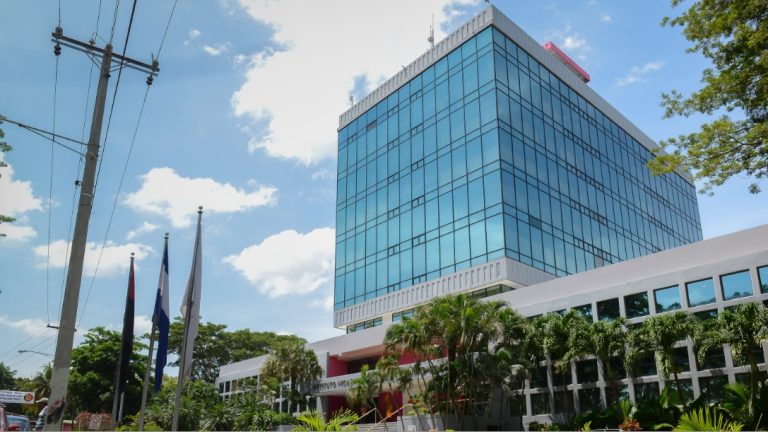11 de febrero 2019

ICJ Rules Against Nicaragua's Request For Germany to Halt Arms Sales to Israel

PUBLICIDAD 1M
PUBLICIDAD 4D
PUBLICIDAD 5D
The INSS is agonizing, and now, a new blow to workers, the unemployed, employers and consumers. Meanwhile, the same people responsible for the debacle

Jefe de misión FMI sobre el INSS insiste en eliminar “las exenciones al IVA
The brutal blow that the regime has just given to Nicaraguans with the new social security reforms must be fully appreciated in light of its causes and background.
When Ortega took office in 2007, the INSS finances registered a surplus of 1.7 billion córdobas. . That is to say, the income that the institution received through the contributions of employers and worker contributions surpassed the expenses by 1.7 billion Córdoba’s. [1 USD = approx. 33 Córdobas]
By November 2018, the situation had been drastically reversed. The surplus had transformed into a deficit of 2.7 billion Córdoba’s. Expenses now far exceed income. Let’s see some of the reasons for that deficit.
Let’s start with the number of employees
When Ortega took office in 2007, the number of employees in the institution was 1,200 workers. Let’s note, 1,200 workers in total in 2007, of which 665 worked at the central offices. At the end of 2017, the total number of workers on the payroll rose to 4,060, of which 2,200 worked at the central level.
That is, while the payroll went from 1,208 workers, to 4,060, the surplus of 1,700 million Córdobas was transformed into a deficit of 2.7 billion Córdobas.
Let’s go deeper into the payroll. In 2006, 10 people worked in the Executive department of the institution. How many worked there in 2017? In the Executive their were 136 persons. Repeat the same figure. In 2006, in executive management there were 10 employees, ten years later that number had increased to 136.
What happened to the salaries?
In 2006, 291 workers earned more than ten thousand Córdobas; ten years later 2,654 workers earned more than 20 thousand Córdobas!
We can reduce the period: in 2012 the total annual payroll amounted to 734 million Córdobas. By 2017 it had grown by more than a billion Córdobas. It reached 1.78 billion.
And what happened to administrative expenses? In 2006, administrative expenses represented approximately 6% of the institution’s income. That’s to say, for every hundred Córdobas that entered, the institution spent six in administration. Ten years later, administrative expenses exceeded 12% of revenues. From six Córdobas for each one hundred, the expenses doubled, and reaching 12 Córdobas of each hundred.
One could say. Well, the number of workers increased, administrative expenses increased, but the management of funds improved.
Forget that my friend!
We must first explain the following: the surplus that the INSS accumulated year after year was transformed into a reserve fund that was invested for the purpose of securing the patrimony of the insured and at the same time receive a complementary income, in addition to the income from contributions from employers and employees.
What happened to the reserves and the investments?
The newspaper La Prensa uncovered several acts of corruption, involving credits and the fiesta with the investments. How much did that represent in numbers?
The yield generated by these investments for several years exceeded one billion Córdobas annually, at one point came to represent an income of 1.400 billion Córdobas.
Do you know how much that performance collapsed?
In 2017 it was 500 million. By 2018 it was cut in half: 224 million Córdobas. For 2019 it is estimated, according to the National budget, will be 87 million Córdobas:
From 1.4 billion Córdobas to 87 million!
These are all official figures.
How can we explain that the staff increased, wages increased, administrative expenses increased, and the return on investments decreased and the surplus became a deficit?
In what did they invest the funds? Why did investment yields plummet so dramatically? Obviously, it was the wild party. For example, there are the buildings in full public view that look like empty boxes.
On the other hand, there is the impact of reduced pensions. A fair measure but that should be incorporated into the budget. The INSS officials themselves warned that INSS finances would not support them. But Ortega didn’t care and in his irresponsible populism stuck a knife in the institution’s finances.
But there is something that is rarely remembered and that is important to note: In 2014, reforms were imposed that happened at night because they were approved during Christmas holidays and by January no one remembered them.
Those reforms meant an increase in employer contributions that went from 16% of the payroll to 19%. And a change in the formula for calculating pensions that represented a significant decrease in the future pensions of active contributors.
On that occasion, the spokespeople of the regime appeared very ambitious affirming that these reforms guaranteed the viability of the INSS for 20 years, until 2034 they said. And well, we already know that the institution was shipwrecked three years later. They punished employers and workers, but it was useless.
How much did the INSS income increase and why did the measure fail so quickly? The same fiesta, professional incompetence or both?
In conclusion: Partying with the funds, professional incompetence and the irresponsible populism of Ortega.
And here we are now, with the institution dying, a new blow to workers, the unemployed, business owners and consumers. And the same slobs and incompetents are still at the head of the institution.
PUBLICIDAD 3M
Economista y abogado nicaragüense. Aficionado a la historia. Bloguero y conductor de la plataforma de comunicación #VamosAlPunto
PUBLICIDAD 3D